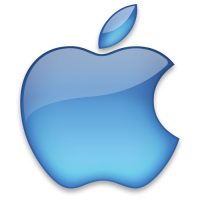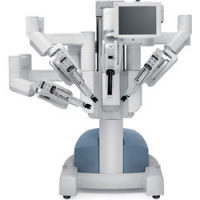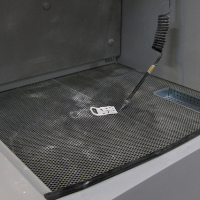The age of computers has given us much more than merely operating systems and the internet. Printing has also undergone a revolution since the days of the printing press and the typewriter. Before computers, all design work, architectural and engineering plans were drawn by hand, but today it is possible to create a printed 3D model of any type of plan and drawing.
Category: Technology
-

What is DisplayPort?
When someone talks about digital display connections, most would mention HDMI or DVI, but rarely do you hear someone mention DisplayPort. The reason for this is that unlike DVI and HDMI, DisplayPort is a fairly new technology, but one that will begin to see increasing use in the coming years.
While DisplayPort won’t replace HDMI in consumer electronics – it may coexist – it is positioned to replace the current display connections in the PC market. There are several reasons why this will happen within the next few years, which I’ll talk about below.
DisplayPort – The New Display Interface Standard
With the increase in the number of high-definition, digital computers monitors being sold, which every computer sold today seems to include, it comes as no surprise that a new standard of connection is beginning to be established.
For several years, HDMI and DVI were the main digital interface standards that monitor manufacturers and graphics cards manufacturers supported. Other hardware and software companies followed suit and began to support those two technologies as well.
There are problems, however, with both of those standards. First, with HDMI logic is required at both the source and display ends. This logic must usually be licensed from Silicon Image.
With DVI, the Digital Display Working Group (DDWG) that created DVI has disbanded, so the DVI standard is frozen in time. Unfortunately, with the speed that technology changes, having a frozen standard isn’t a good thing.
With the shortcomings of both HDMI and DVI, another standard was needed, which is where DisplayPort comes into the picture.
In 2003, Dell originated a new digital display interface, and then turned it over to VESA in August 2005. By May 2006, VESA published it as an open industry standard. DisplayPort has been designed to replace HDMI, DVI and even VGA in the computer world, and coexist alongside HDMI in the consumer electronics arena.
Technical Details of DisplayPort
HDMI and DVI uses Transition Minimized Differential Signaling (TMDS), which was developed by Silicon Image. Unfortunately, this technology requires logic that may need to be licensed from Silicon Image.
DisplayPort uses a packet-type interface, much like a network, that can easily be implemented in chipsets. The advantage of this is that there is no extra cost of logic that is needed. Thing of DisplayPort as being a high-speed network connection for video. The network-like design allows for a single connection to send multiple video streams. This means that a single DisplayPort port can connect to multiple displays.
To account for the high-speed, DisplayPort uses a serial interface with up to four main data lanes that can carry multiplexed video and audio data. Each data lane supports a raw data rate of 1.62Gbps, 2.7Gbps, or 5.4Gbps (DisplayPort 1.2 or later). If all four lanes were in use, you would be looking at a raw bandwidth of 6.48Gbps, 10.8Gbps, or 21.6Gbps.
Up to 8 channels of 16- or 24-bit at 48KHz, 96KHz, or 192Khz of audio is supported. The audio portion is optional, but has an uncompressed bandwidth of 6.144Mbps.
There is also interoperability with both DVI and HDMI using simple, and inexpensive adapters.
Who is Supporting DisplayPort?
Of course a technology standard won’t survive if there aren’t supporters among many of the large technology companies. As of right now, many of the popular technology companies support DisplayPort.
Both NVIDIA and AMD/ATI produce graphics cards chips that support DisplayPort. Major manufacturers, such as Dell, HP/Compaq, Lenovo, have introduced products that now offer DisplayPort.
Starting in October 2008, Apple began introducing it’s products with DisplayPort support. At the time of the release, it offered the mini DisplayPort option, which was proprietary at the time. With the newer DisplayPort standards, the mini DisplayPort connector has become standard.
With the introduction of the DisplayPort, people are probably wondering why another digital video interface standard has been introduced. The with technical (DVI) and the licensing (HDMI) limitations of the current standards, it became apparent that a new standard to overcome those limitations was needed.
The technological advancement of the DisplayPort, and the fact that it is a royalty-free standard makes it a welcome standard, and one that will probably see a rapid adoption in the PC market over the next few years.
-

A Shaky Start in the New Apple Era
To put it lightly, Apple has had a rough past few months. Steve Jobs stepped down as CEO of Apple in August, passing the title onto longtime COO Tim Cook, in a move that troubled investors and Apple enthusiasts alike.
Then on October 4th Apple released the iPhone 4S in the face of harsh criticism from consumers and analysts who were expecting the enigmatic iPhone 5.
The very next day, Steve Jobs, the face and mastermind behind everything Apple, passed away after a long battle with pancreatic cancer. Fans and admirers around the world mourned his loss.
-

4G is an Indispensable Technology Whose Benefits Can’t be Denied
4G isn’t yet an indispensable technology – and if you don’t really care about the speed your devices work at, or if you’re quite happy with the way they work, then it won’t make a blind bit of difference to you beyond the fact that at some point you’re going to have to get a new phone.
The benefits of 4G, though, certainly can’t be denied – it’s four time faster than 3G, which means you ought to be able to use your mobile device with the same agility that you use a home internet connection.(more…)
-

The VoIP Advantage For Businesses
Traditional operators from day’s past would wheel-and-deal incoming customer calls via a switchboard.
It was a chaotic transfer of wires from one line to the next, oftentimes inviting the chance of dropped calls, fumbled transactions and other hiccups.
Sure, communication has seemingly jumped from one revolutionary milestone to the next since, but the need for faster, stronger communication has come in the form of VoIP, or phone messaging systems.
From technical benefits on down to business efficiency, having a VoIP service has taken communication to a whole new level.
-

3 Internet Speed Tips for Better Online Gaming
One of the greatest things that came along with faster broadband internet access is the ability to play online games from anywhere in the world with people from other parts of the world. One thing most people complain about, though, when it comes to playing games online is speed. It doesn’t matter if you’re trying to play World of Warcraft, EVE Online or any other form of online game, you need better internet speeds to be able to enjoy your time.
While you might have better internet speeds already, it doesn’t hurt to take things a step further. In this article I will be sharing 3 points with you to help you get better internet speeds for online gaming.
-

How Robots Are Being Used in Medicine
Technology has been used to make nearly every facet of our lives easier. The use of technology in medicine has had an extensive impact, from the way computers are used to manage patient data, promote research, and encourage collaboration to the way that machines such as MRIs and other diagnostic devices have been used to more accurately identify health disorders and diseases.
Technology has made a significant impact on our current health care system. Some of the most interesting uses of technology are in robots, used in a number of applications for medicine. Here’s an overview:
-

GPS Tracking Technology Runs into Legal and Privacy Concerns
The Supreme Court’s fall term, which began this week, is slated to hear several cases involving issues of surveillance technology. Specifically, it will determine if law enforcement officials have the right to use certain technological features to track a subject, and if so, at what point in the process a warrant needs to be obtained.
